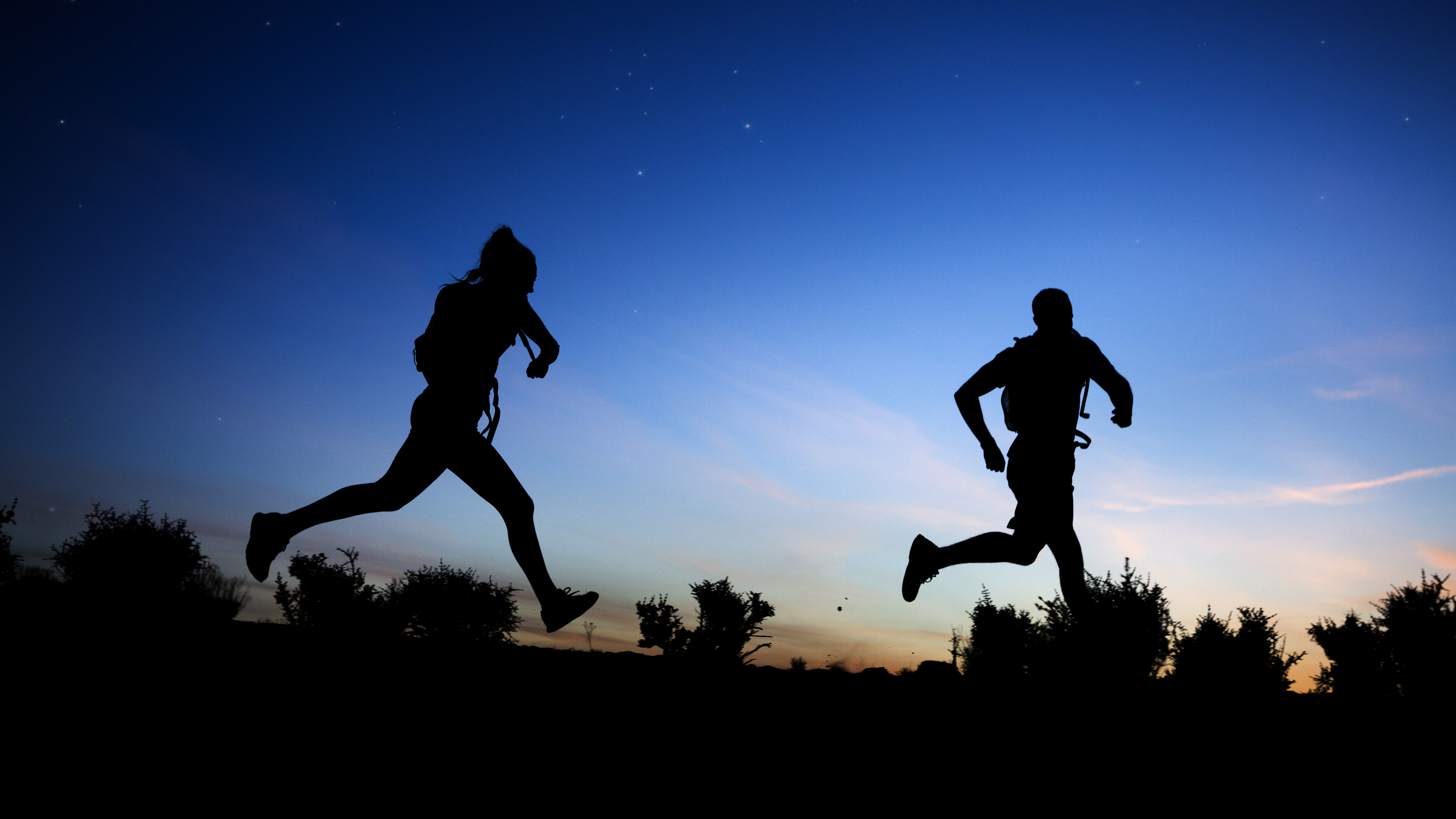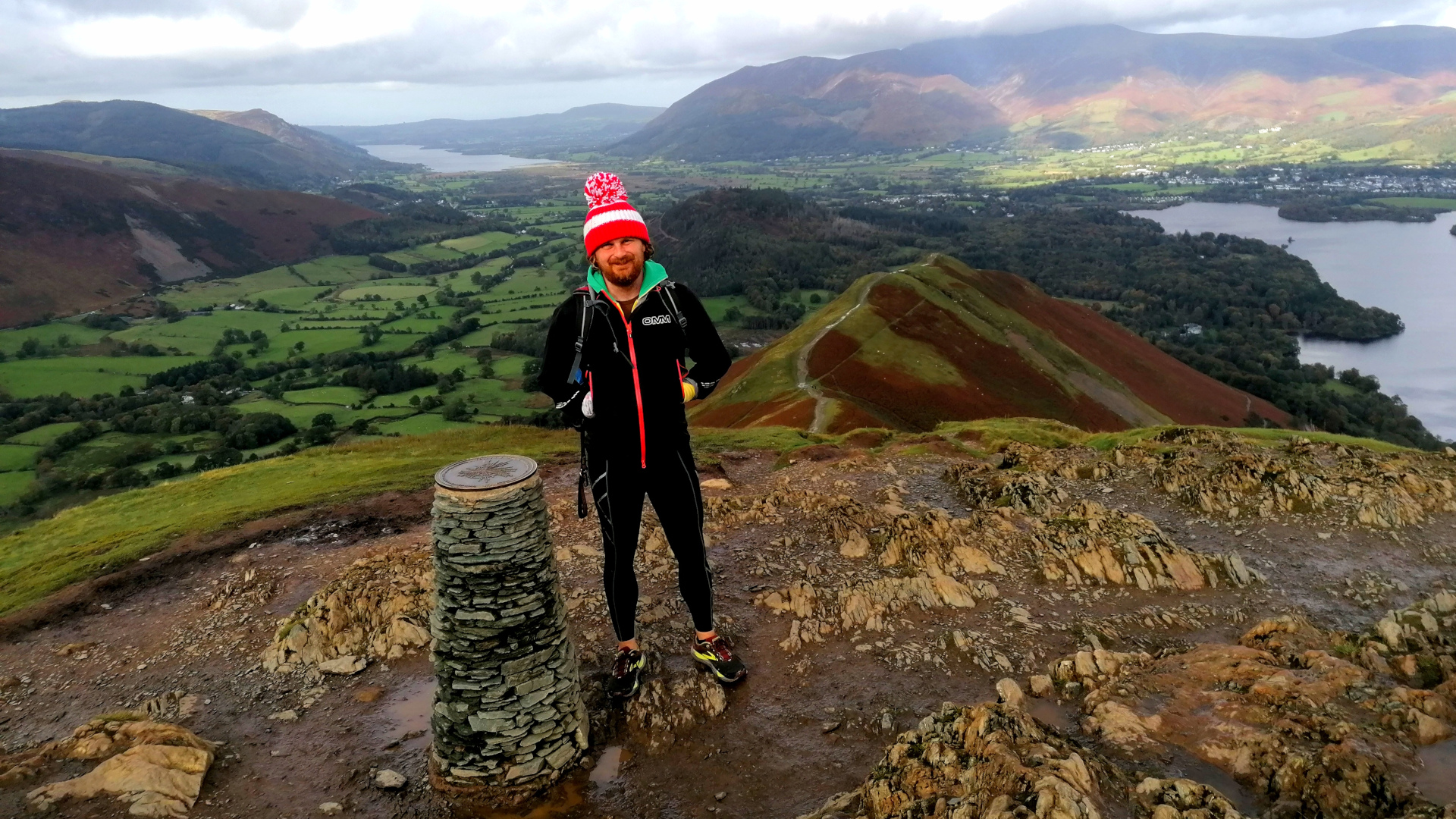
Running with a headlamp opens a whole new world of trail running joy and eliminates the barrier of fading light. After all, a lot of runners struggle for motivation in the winter, when daylight hours are limited, conditions can be wet, cold and generally grim, and a lot of your favorite trails can seem sodden or out of reach.
But it doesn’t need to be like this. Running with a headlamp strapped to your bonce offers you the ability to see your trails in a new light (literally), and to inject some much-needed fun and a sense of adventure into your winter running. The best headlamps give more than enough light that you need not worry you'll make any missteps in your trail running shoes.

Running with a headlamp: why run at night?
Road running is fine for fitness, but to reconnect with nature and to enjoy some quality running, head for the trails. Your senses have to work harder when you're night running with a headlamp off-road, but in a more pleasurable way than when you are playing chicken with cars and pedestrians during a busy rush hour run on the roads or sidewalks.
You will hear the squelch of the mud a lot more acutely and the noises of wildlife much clearly. Different wildlife too – the beasts working the nightshift will vary depending on where you’re running, but you might hear owls calling, badgers and foxes snuffling, and maybe you’ll even feel the flutter of bats as they swoop and seeking out prey among the trees by the trail.
The best headlamps will enable you to see directly in front, and perhaps offer some ambient lighting on either side too, depending on the model and the settings it offers. However, your eyes will be much more focussed straight ahead – on that narrow field of vision – than they typically would be during a day run.
As a result, you'll notice other senses will come into play much more when night running with a headlamp because you are not so focused on visual stimuli. This in itself makes for a very rewarding and engaging run.
Listening to animal life is one enjoyable aspect of night running with a headlamp, however, when you see animals it can be a little different. Animals' eyes reflect the torchlight so you can suddenly find yourself being observed by a rabbit or deer, but should you enter a field of sheep, hundreds of glowing eyes focused on you can make it feel like you are in a horror movie for a brief moment. There is, of course, no need to be concerned, animals are far more worried about you than you are of them, so pass them with a wide berth and they will soon lose interest. Fields full of curious cows are, perhaps, best avoided however.
All the latest inspiration, tips and guides to help you plan your next Advnture!
Running with a headlamp: how to get started
When running with a headlamp, start on a trail you know well. Navigating in the dark is a whole new skill set entirely, so you should resist the temptation to go exploring too far and too wide. You will soon see how less obvious routes on your well-known trails will start to tempt you down the wrong path.
It is also a good idea to start your night running forays with a friend or two, so you have a bit of companionship and extra reassurance. If you start your run at dusk it will allow you time to acclimatise to running at lower light levels – this is also the best time to see wildlife moving about.
As with all trail runs, it is a good idea to let someone know the area you are going to be running in, and roughly what time you expect to be back. If you’re venturing a long way from the beaten track, be sure to wear and/or take enough layers to keep you warm.
We'd recommend bringing along what you usually take trail running, perhaps with an extra spare due to the colder temperatures. Ideally, you should wear a decent base layer and running leggings under your shorts, and carry a spare fleece jacket and waterproof jacket in your hydration pack. Running gloves and mittens are also a good idea. In the event of a mishap, such as a fall or a badly twisted ankle, you will be significantly slowed down or even immobilized, which is why spare layers are so important. For this same reason, it’s a good idea to take a phone, particularly if you’re night running solo.

Running with a headlamp: what to look for
Running with a headlamp is no fun if you've got a light that is designed for campsites, caves or trekking. With this in mind, it is definitely worth investing in a running-specific head lamp (Advnture's favourite is the Silva Trail Runner Free), rather than a cheap all-purpose camping or working light. You definitely don’t want to be worried about the longevity of your light supply, and you should choose a head lamp that has been designed to be out in all the elements, and which doesn’t weigh too much.
Running-specific headlamps often come with a red light on the back, this is very useful if your route is going to involve an element of running on roads, no matter for how brief a duration.
The total amount of visible light, measured in lumens, is another consideration. Many head lamps have two or more settings, with the more powerful light lasting for far fewer hours than the low light setting, so be sure to check the specs carefully.
It’s a good idea to start running on the lower setting – often your eyes will adjust and this amount of light is sufficient for some time, but you may need to go up to full beam when the darkness thickens amid trees or when the moon goes behind clouds. If, however, you go the other way and start with the brightest setting, you’ll have to stick with that for the whole run because your night vision won't kick in at all, and your batteries might be exhausted before you are.
Weight is another consideration, but, particularly if it has been distributed across the headband (with the battery pack at the back and the lamp at the front) this probably won’t be as big a consideration as the brightness and comfort. A few grams here or there may sound like a lot, but if you are looking at purchasing a head lamp specifically for night running then they will all have been designed and tested with portability in mind. (The Silva Trail Runner Free is particularly good for night runners.)
There are myriad other considerations, and many excellent models to choose from, which you can peruse in our buying guide to all the best head lamps. So, don’t be stuck at home this winter when you could be out exploring the trails – running with a head lamp will reinvigorate your winter night running and offer some great adventures and experiences close to home.
After competing professionally in triathlon from 2006 to 2011 – including two appearances in the 70.3 World Championships in 2008 and 2009 – Tom turned to writing and adventure-style event management. He organises trail, road, night and mud races in the UK under the name Relish Running, a company he set up to share his love of running, and all the secret trails he’d found while exploring the wilderness. He also wanted a career which was less tiring than being an athlete, it turns out being a race director was a terrible choice, it’s exhausting.

